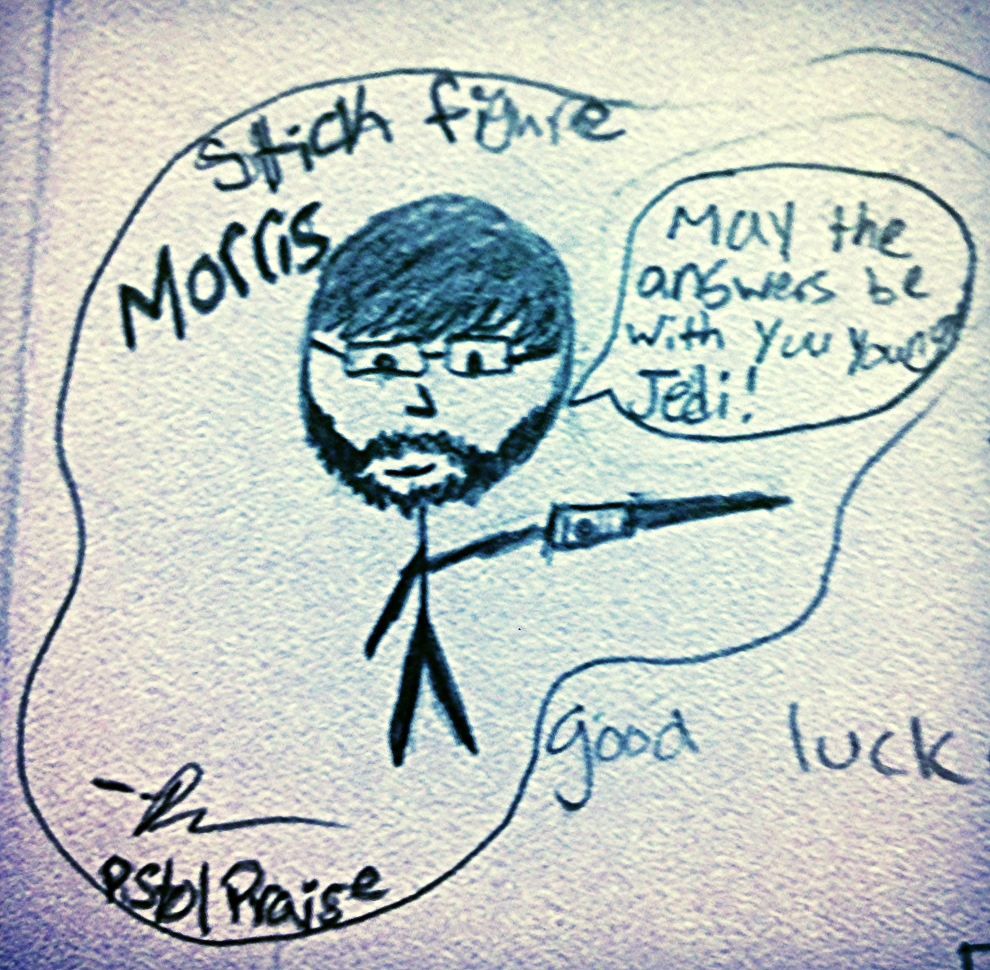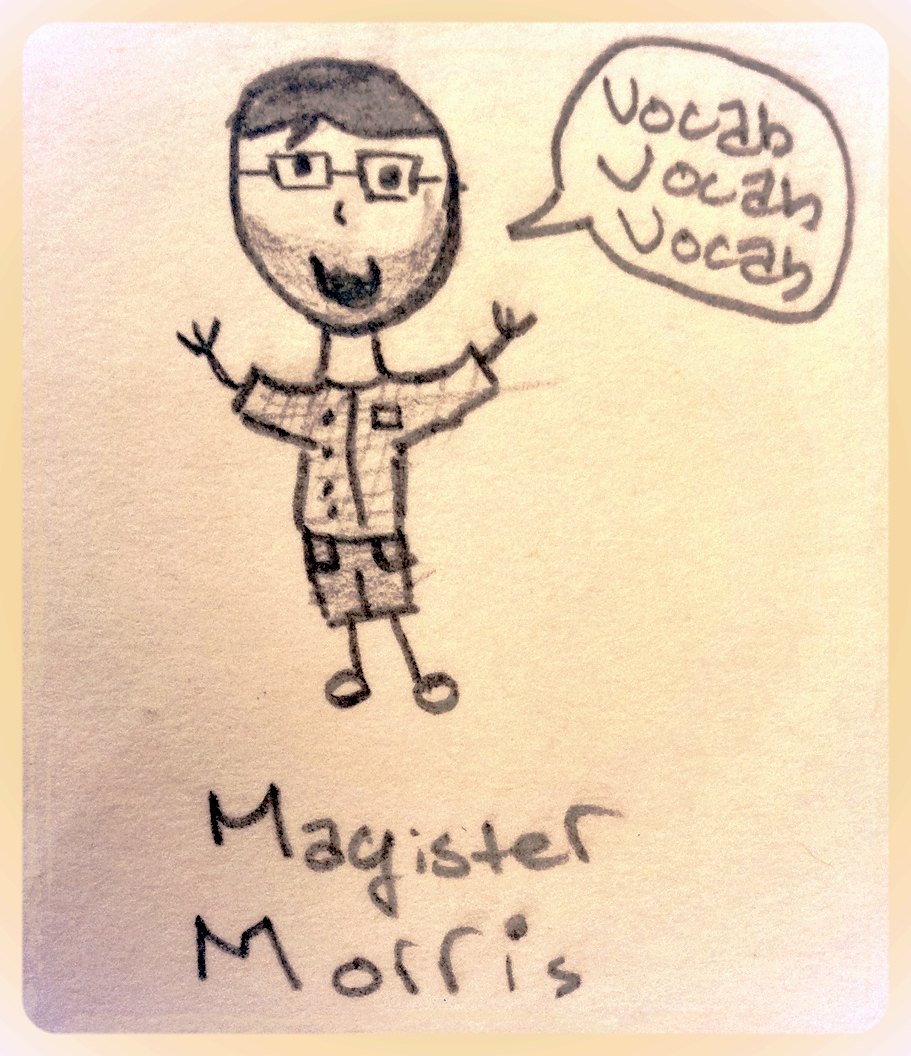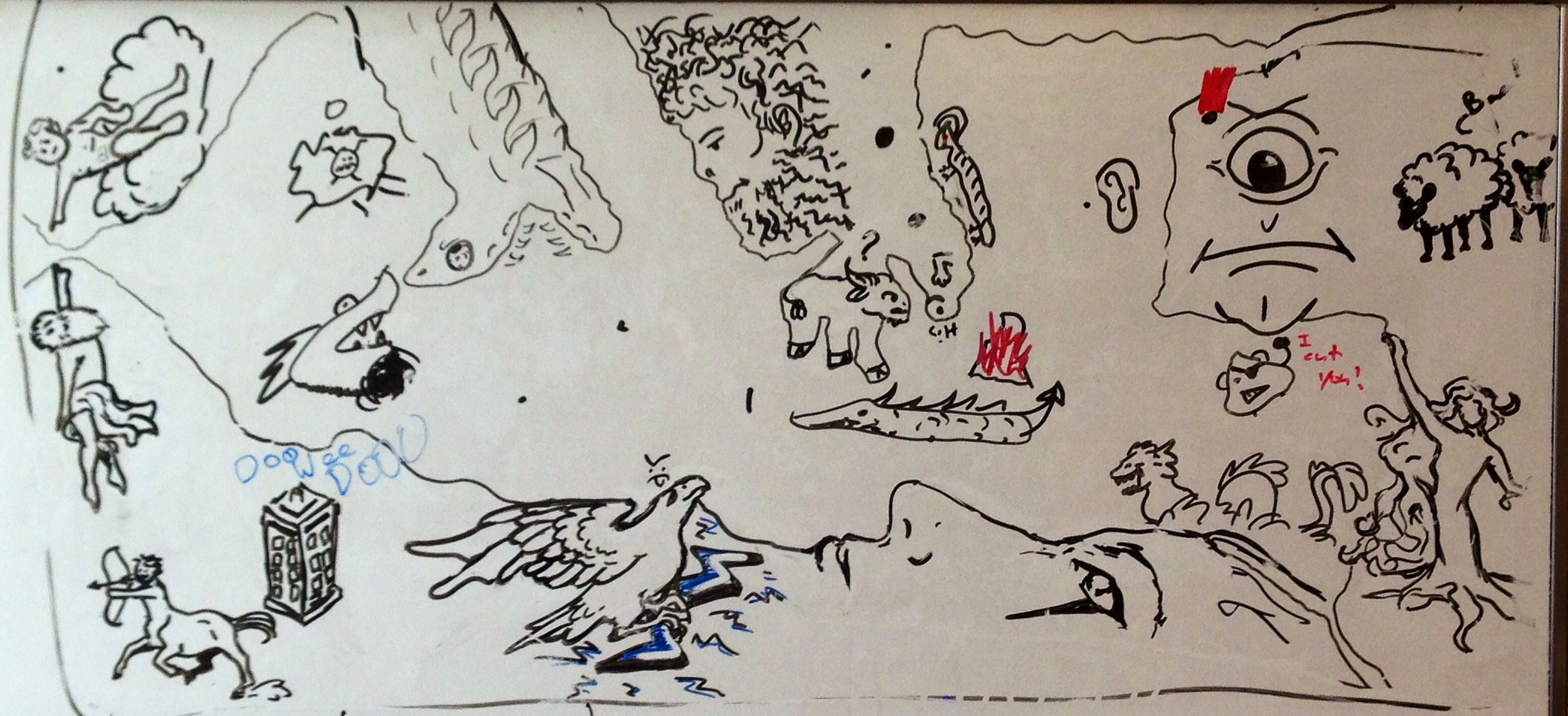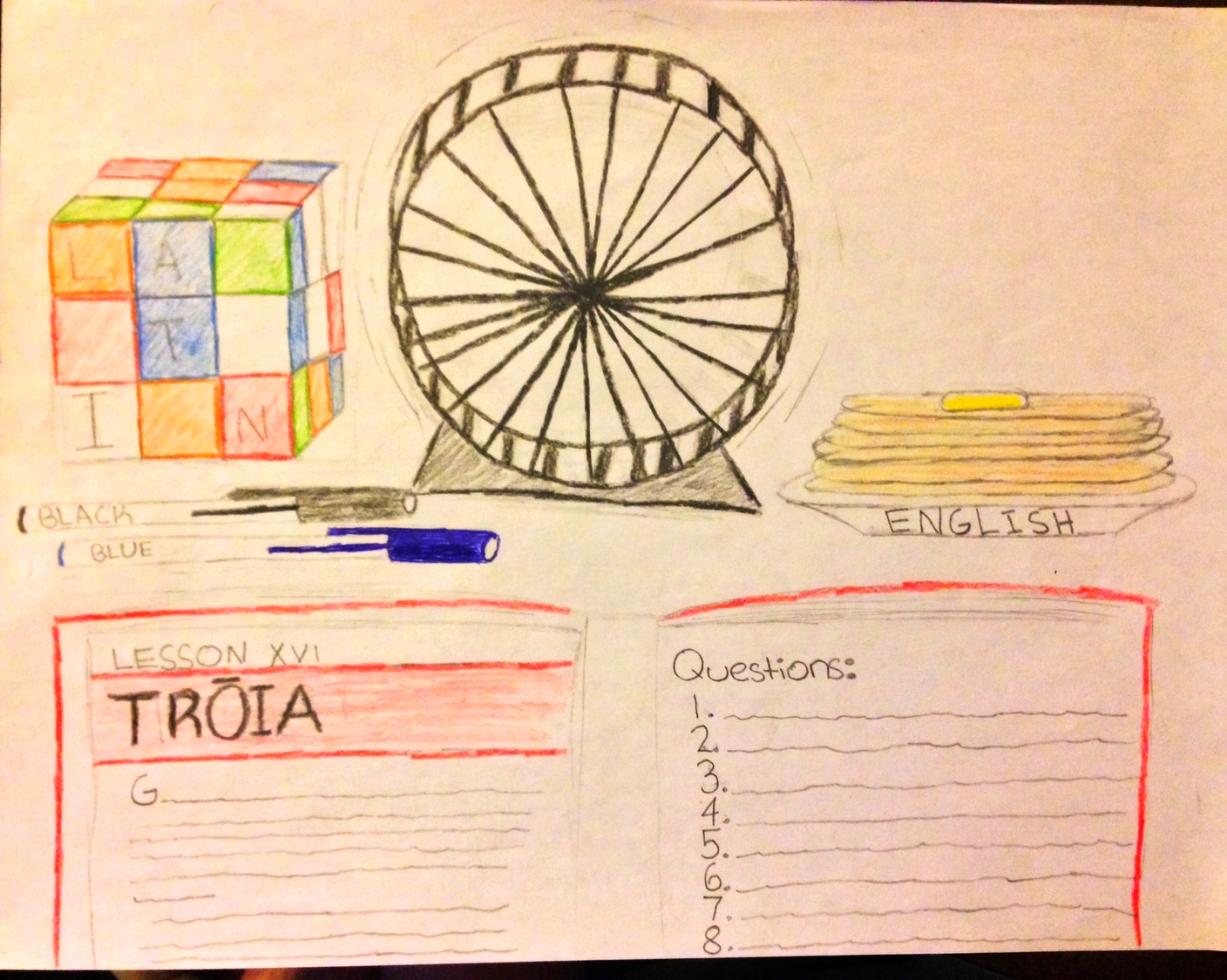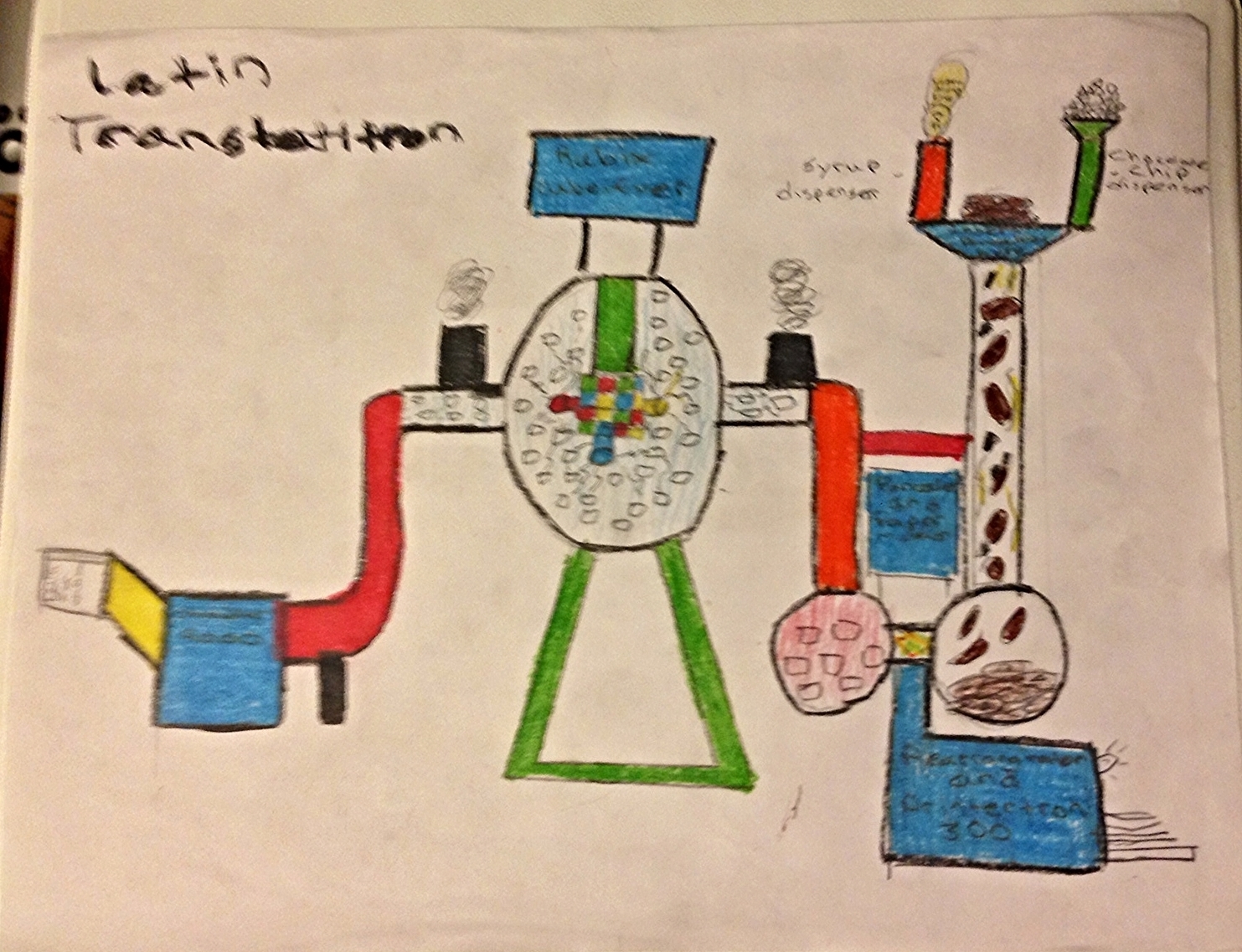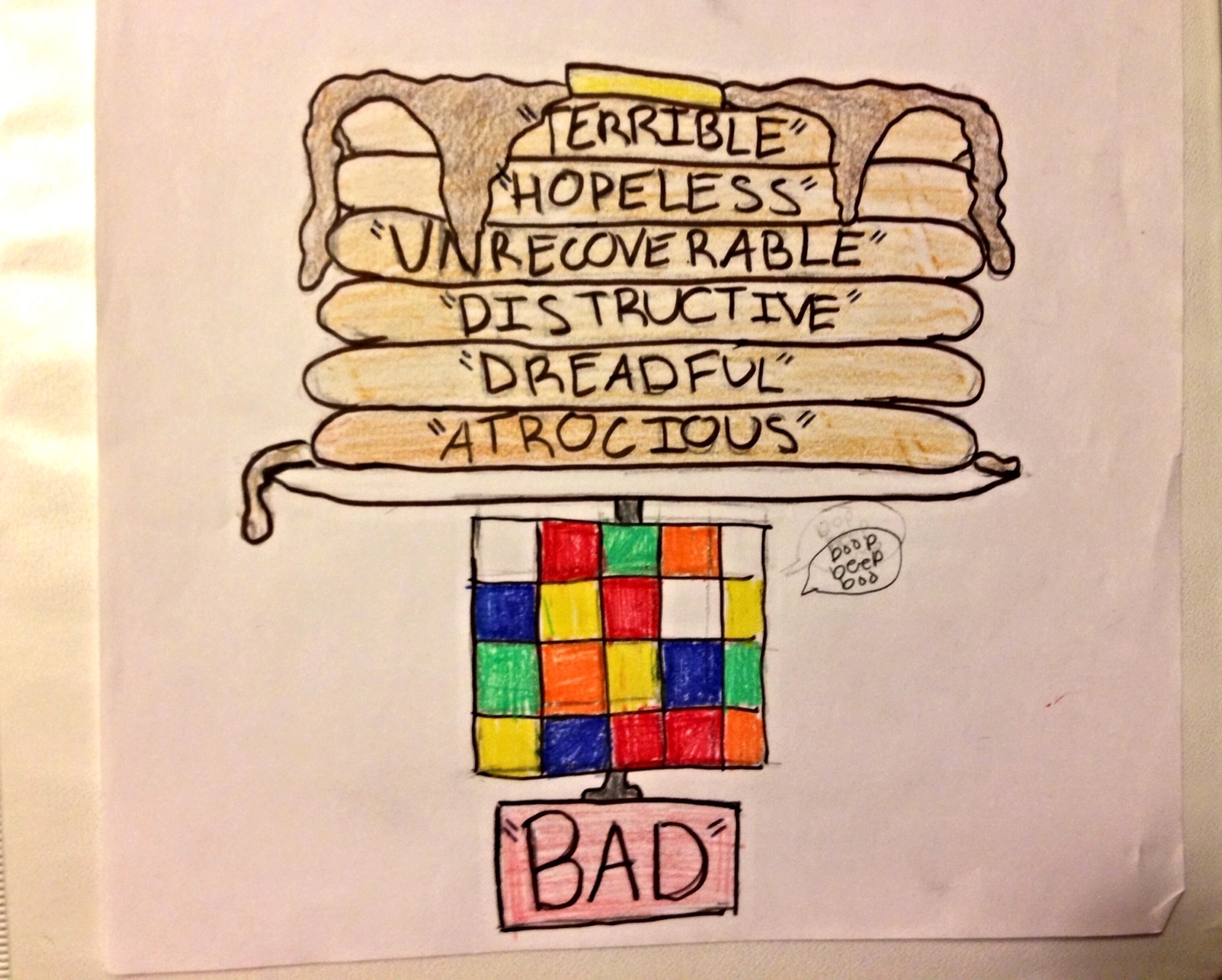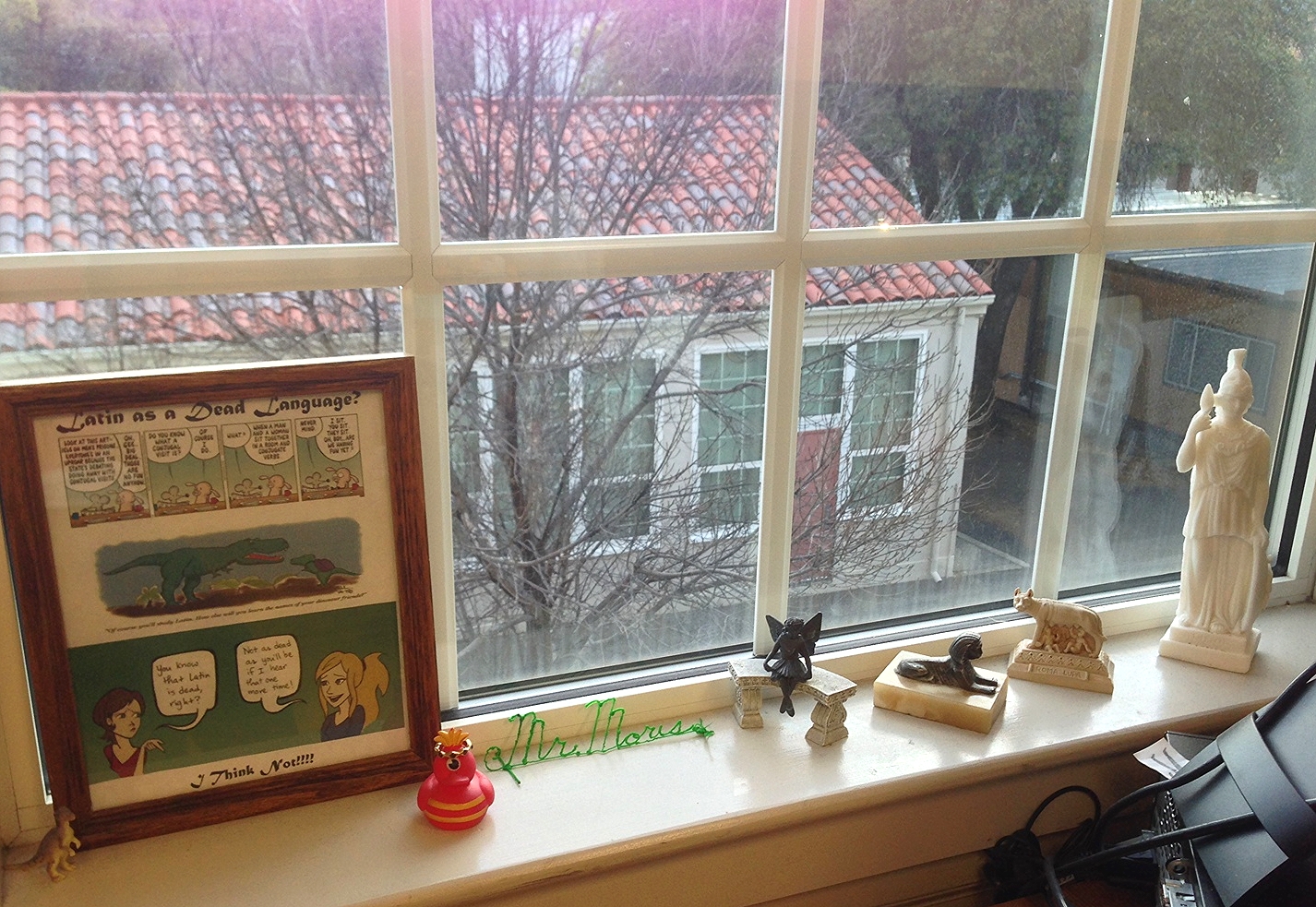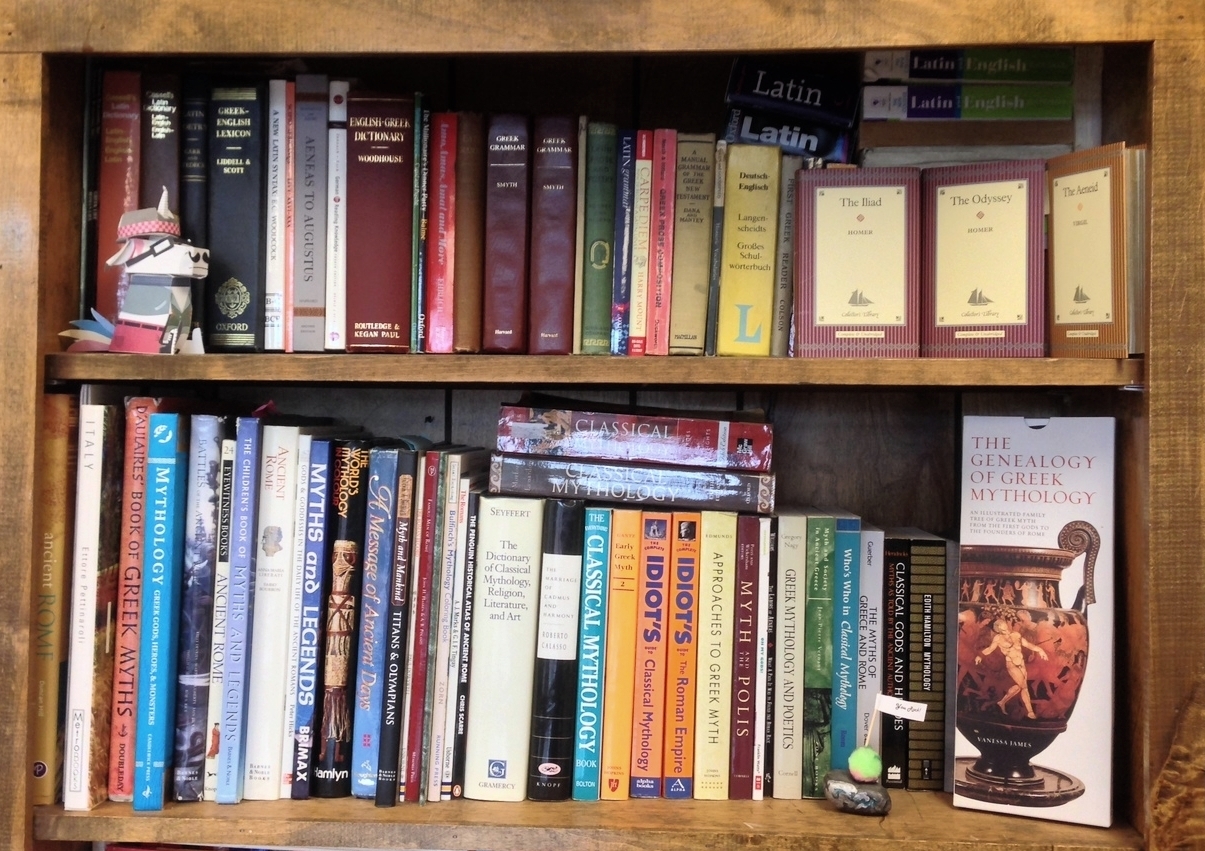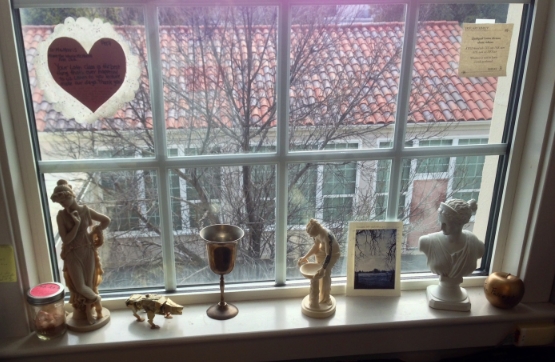I designed my classroom to frame and stage 5 years of AP-track Latin Curriculum.
Its spaces, resources, and decor map the topics and tools which students learn from day-to-day and year-to-year:
"Latin Vocabulary"
Latin Words & Roots
English Cognates
Roots and Stems
Morphology & Word Patterns
ACT & SAT Verbal Test Prep
Customized Weekly Quizzes
Summer Vocab Quests
Daily Contests and Drills
Weekly Word Webs
Dictionary Pattern Hunts
Synonym Contests
← Student sketches of my 3 favorite words
Diei Officia
"Duties of the Day"
Study Schedules
HW Planning
Curricular Maps
Short & Long Planning
Information Processing
Interactive Board Work
Developing Applied Reasoning
Guided Paradigm Study
Always Checking Work & Answers
Primum Pensum
"Primary Tasks"
Bell Tasks:
This is from the PowerPoint I made & presented to faculty on the English writing & Critical Thinking components of the new Common Core Standards. I propose a teaching method based on Bell-Tasks for in-class writing and teacher scoring of that writing to help students develop high level expository and analytical skills.
Strategic Questions to start the day, interfaced carefully with Binder Notes checked on a daily basis.
Learning Logs:
End of class reflections on daily lessons. Guided by teacher commentary and collected weekly.
Structured Note-taking
Expository Lessons
Analytical Systems
Binder Integration
Guided Cultural Critique
Feedback on Writing
Second & Third Drafts
Training on How to Use and Review Notes
Domi Opera
"Home Work & Study"
Classroom Library
Resource Space
Catalogs & Periodicals
Carefully-Guided Home Studies
Textual Criticism
Overseen by Homer, Yoda, and Caesar
Cultura Romae
"Culture of Rome"
Gallery of key Mythological Images
Historical Legacy
Politics, Society, and Religion
Art & Literary Scholarship
Expository Writing
Socratic Seminars
War & Peace, Chaos & Order
Source Analysis
Art works referenced regularly in lectures & projects
Hic et Nunc
"Here and Now"
Influence of Rome on today
Cultural Critique
Interdisciplinary Bridges
Modernity Studies
Also a student study hall & relaxation space
Grammatica
"Grammar"
The Fuel of Latin, and English
Rigorous Study of Syntax
Word Contexts & Semantics
Paradigms & Synopses
Weekly, Timed Training
Sentence Diagramming
Total Linguistic Awareness
Rhetorical Studies
First Year students do "Grammar Comics"
to make the info more fun & accessible
← I mused in class once that Latin is like a Rubix Cube (because its parts are always switching), & English is like Pancake stacks (because we use a lot of words and frames). The students loved the idea, and turned it into their motto.
Modi Moresque
"Methods & Ethics"
(also translatable as "Behavior & Morals"
or as "Organization & Discipline")
One's Code of Academic Honor
Teaching Strong Study Skills
Upholding an Effective Work Ethic
Instilling Intellectual Discipline
Tutoring & Support
Academic Mentoring
Scholastic & Heuristic Standards
(Students enjoy that "Mores" in Latin resembles my own name.)
I work hard to make my classroom a total learning environment. In ways, it is always evolving to contain more culture: part library, part museum, part myth-realm, part study-space, part clubhouse.
Over the years I've managed to collect a good many Classical statuettes, figurines, works of art, and all kinds of teaching displays and props that I regularly feature in daily lessons.
The students are always playing with everything, which I encourage, and they often bring me many new pieces to add to the collection; some of my best pieces were gifts from them.
My Perspective : Immersion → Enthusiasm → Learning



